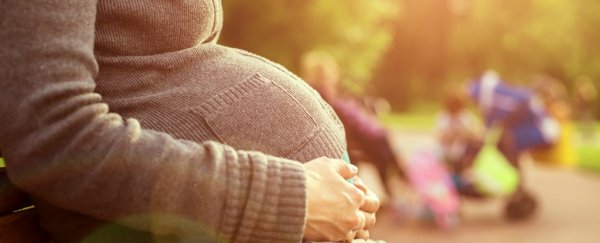When my wife became pregnant with our first child, we could barely contain our joy. Then we panicked.
To vanquish our ignorance, we both started reading immediately and obsessively on the latest science behind pregnancy and child development.
A few surprising facts stood out in that torrent of books, studies, articles, and apps.
But the ones I found the most eyebrow-raising had to do with the awareness possessed by babies in the womb: Their hearing and sight develops remarkably early and begins sponging up information far sooner than I expected.
When and what can babies hear?
Every baby, mum, and pregnancy are different, but most of a foetus' inner ear structures form by week 16, allowing it to hear sound.
By 24 weeks, the cochlea, eardrum, ossicles, and other crucial ear structures are fully formed - and the 'record' light is on in the baby studio.
From then on developing babies can easily hear mum's heartbeat, eating, breathing, walking, talking, exercising, burping, and digestive gurgling.
This may help explain why babies find noise so comforting. There's also some evidence to suggest babies learn to recognise and react to mum's voice while inside the womb.
Do loud sounds hurt unborn babies?
The sounds a mum exposes herself to are what a baby is exposed to as well, but babies can't put in ear plugs.
The CDC says mums should avoid very loud noises exceeding 115 dBA - chainsaws, gunfire, jet engines, blaring music, loud concerts, and so forth.
Consistent loud noise (like heavy machinery) can also damage a baby's hearing in the womb.
What about loud but non-damaging sounds? Those can surprise babies in the womb, sometimes enough to even make them cry.
When and what can babies see in utero?
Although a baby's eyes can 'see' light starting around week 16, their peepers aren't recognisable (as we know them) until about week 20.
The eyes first open between weeks 26 and 28, doing so most regularly starting around 32 weeks into a pregnancy. Development of vision is tremendously complicated, so a lot of it continues after birth.
And yet, a foetus can see inside the womb. Their vision is rather blurry, but they sometimes respond (with a flutter of activity) to bright sources of light like the Sun or a flashlight pointed at a woman's belly.
Getting outside often might even help a baby's eyes develop and reduce the risk of a few eye disorders.
What does it look like inside there?
Imagine being inside a big, thick, red balloon that's filled with water. A flashlight projecting through your cheek to create a dull red glow is probably a good (and more practical) example.
This article was originally published by Business Insider.
